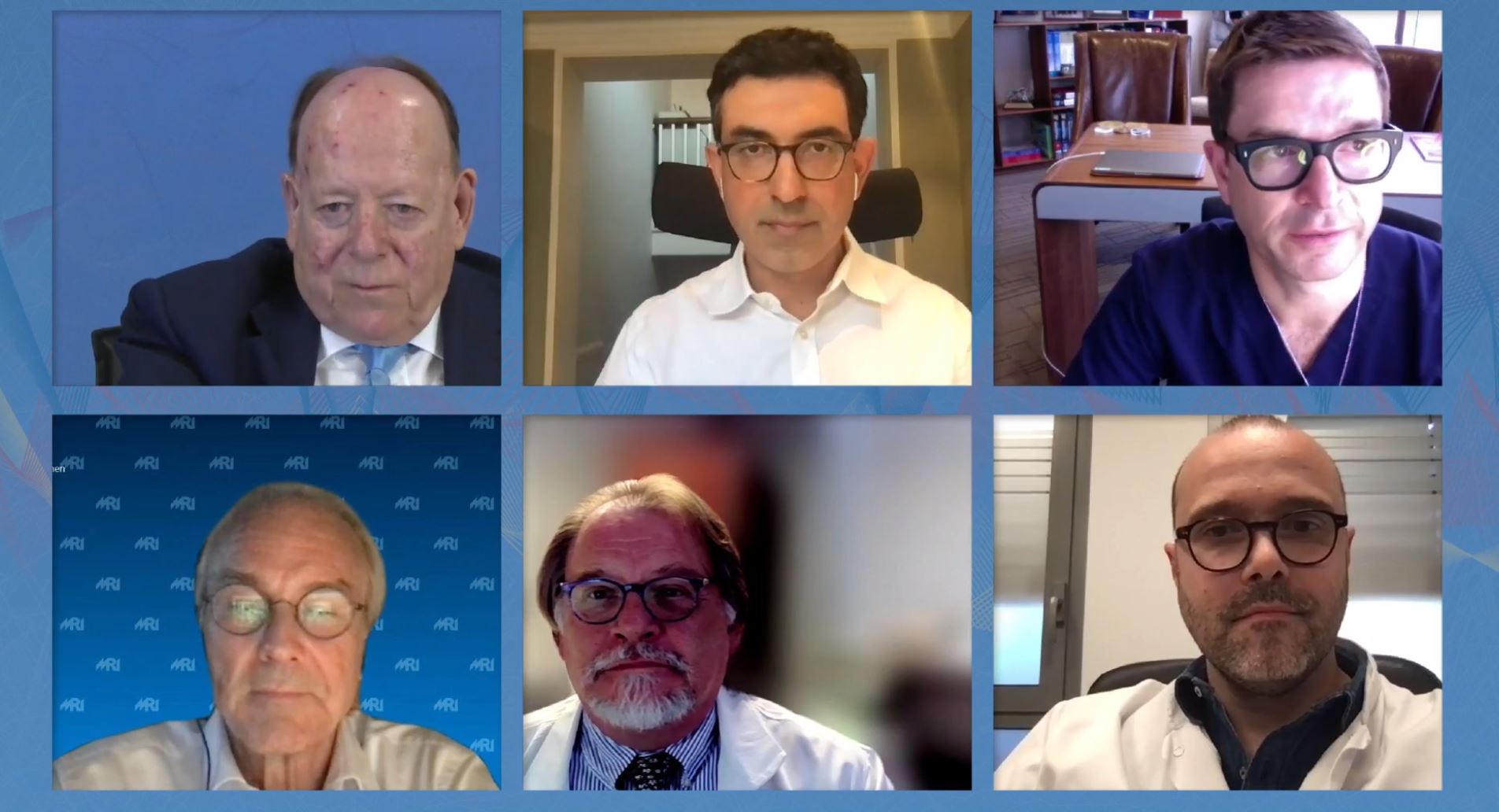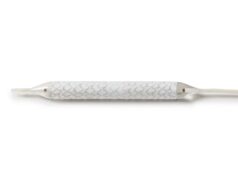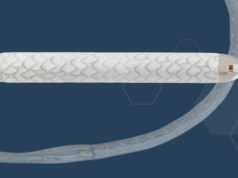
“In native or stentgraft aortic infections, when a biological solution is not feasible, the antimicrobial Synergy graft (Getinge) offers an alternative solution with a low rate of reinfections,” Xavier Bérard (Bordeaux University Hospital, Bordeaux, France) told virtual attendees of the 2021 Charing Cross Symposium (CX; 19–22 April, online).
Presenting on the in situ reconstruction of native or stentgraft aortic infections with antimicrobial grafts, Bérard contextualised this research: “In case of abdominal aortic vascular graft/ endograft infection, reconstruction with autologous vein should be considered as the preferred method.”
He then detailed the protocol used at his institution, the Bordeaux University Hospital: “In our department, we do not like soaking the graft in rifampicin; we prefer to use InterGard Synergy from Getinge, combining silver and triclosan. In addition to antimicrobial grafts, transmesocolic pedicle omentoplasty was performed whenever possible. At least six weeks of untargeted antimicrobial therapy was prescribed to the patient, and an antifungal drug was added in case of bowel fistula. Every patient was followed-up, thanks for a monthly multidisciplinary staff meeting, and a routine PET-CT [positron emission tomography-computed tomography) was done at six months postoperation to detect early reinfections. A PET-CT scan was done yearly thereafter, up to three years.”
From February 2014 to April 2020, 400 Synergy grafts were implanted. Of these, 86 were aorto-iliac infected cases: 32 were mycotic infections, 28 were graft infections, and 26 were stentgraft infections.
“Unsurprisingly, in this cohort, the worst category was stentgraft infected patients,” Bérard said, noting that in this subgroup nearly 50% of patients had bowel fistula or erosion.
In terms of operative details, 21% of total procedures involved coeliac cross clamp, and 38% required an infrarenal cross clamp. Mean operative time was 288 minutes, though this was lower in the cohort with mycotic infections: 234 minutes, compared to 347 minutes for those with a graft infection, and 302 minutes for those patients with a stentgraft infection.
Overall, in-hospital mortality was 22% (19 of 86 patients); 30-day mortality was 14%. Of these 86 patients, 9% (three patients) had a primary aortic infection, 25% (seven patients) had an aortic graft infection, and 35% (nine patients) had an aortic stentgraft infection. “The highest rate of in-hospital mortality was for aortic stentgraft infection, with 27%,” Bérard noted. Ongoing, uncontrolled sepsis was the main indicator of in-hospital mortality.
The overall survival at two years was 75%. Bérard told the CX audience that “The survival was significantly better in cases of mycotic lesions”. He continued: “In case of bowel fistula, the follow-up showed an overall survival of only 50% of cases at two years.
“Overall, freedom from reinfection was 91%. In subgroup analyses, it was 96% for primary aortitis, and 83% for secondary stentgraft infection at three years.
“During the follow-up period, we recorded four infections. Two for graft infections, and two for mycotic lesions. Primary patency was non-significantly better for mycotic lesions compared to secondary graft infections.”











